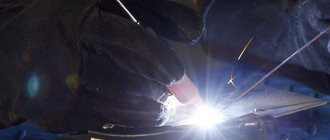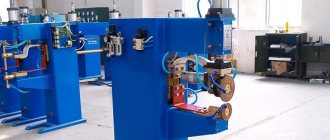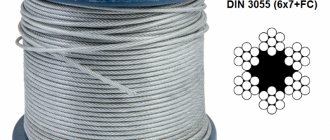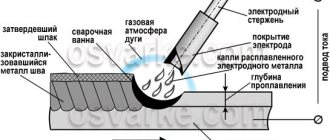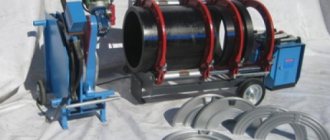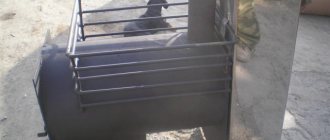When we talk about welding, we first of all talk about the correct control of welding machines. And this is correct, because the skill of a welder largely lies in his welding skills, it is thanks to them that he receives new categories. However, not only the welding machine and the parts on which it is used are involved, but also various welding materials. Find out what it is and how it is used in this article.
Requirements for welding materials
Welding materials are varied and perform the following functions:
- removal of oxides;
- ensuring correct fusion, as well as a more accurate seam;
- protection of the seam from oxygen;
- cheaper welding, etc.
But for welding materials to really help, they need to meet quality requirements. Therefore, their sale is under strict control, and production is carried out according to established standards. For example:
- GOSTs 9466 and 9467 are responsible for metal electrodes.
- GOST 2246 is established for welding wire.
- GOST 9087 regulates the quality of welding fluxes.
- GOST 23949 - for tungsten electrodes, etc.
You need to know these GOSTs, as they are indicated on the packaging and certificates attached to each batch. In addition to GOST, you can also find information about:
- type of material, brand;
- heat number, batch number;
- chemical composition;
- mechanical characteristics of welding materials;
- net weight, etc.
In addition to the composition, requirements for calcination are also established. It is carried out at a temperature of +300 – +350 °C for 1–2 hours. This process, in addition, allows you to find defects in consumables. There is a whole standard, GOST 6032, which describes the requirements for welding consumables that have high durability. They must pass the ICC (intergranular corrosion) test.
There are requirements for storage conditions and transportation.
Application of oxygen
Oxygen is heavier than air, it promotes the combustion of gases and vapors at high speed, which releases heat and reaches a high melting point. The interaction of compressed oxygen with fatty oils and lubricants leads to spontaneous ignition and explosion, so work with oxygen cylinders is carried out in clean conditions, without the danger of such contamination. Storage of oxygen-type welding materials is carried out in compliance with fire safety standards.
Oxygen for welding is technical, obtained from the atmosphere. The air is processed in special separation devices, carbon dioxide impurities are removed, and the final product is dried. Liquid oxygen for transportation and storage requires special containers with increased thermal insulation.
Types of materials for welding
Considering how many functions can be performed by welding consumables, they are divided into: electrodes and rods, wires, fluxes, gases and ceramic linings in case of joining joints.
Each consumable does something different due to its principle of use and composition, so to choose, you first need to study all the classifications and their characteristics in order to navigate them freely.
Wire, rods
When the wire melts, it fills the seam formed during welding. Therefore, the wires are called filler wires and they are:
- Low carbon when the carbon content is less than 0.12%.
- Low alloy - for heat-resistant and structural steels.
- Highly alloyed - for chromium-nickel steels, stainless steel.
Classification
The following types are distinguished:
Wire
The welding wire and consumable rod electrodes made on its basis are heated in the electric arc flame, gradually reach the melting point and flow into the weld pool . There they are mixed with metal from the melted edges of the workpiece. After moving the electrode and arc further along the connection line, the melt crystallizes, connecting both workpieces into a single whole.
The welding wire is fed into the working area semi-automatically at a constant speed. It contains the necessary alloying additives. Based on this feature, wire is divided into the following types:
- low carbon;
- alloyed;
- highly alloyed.
The choice of wire is determined by the material of the workpieces. Its chemical composition should be close to the composition of the alloys being welded. Alloying additives are used to improve the quality of the weld. Copper plating of wire is also used.
In addition, wire and fusible electrodes are used as elements of the welding electrical circuit . Voltage is applied through them, and when the tip of the wire touches the workpiece, an electric arc is ignited. In the case of semi-automatic welding with a non-consumable electrode in an atmosphere of protective gases, current flows through it. The mechanical feeder only feeds filler wire or tape. The standards provide for 77 different grades of welding wire.
Tape and rods
In manual welding with a non-fusible electrode, the filler rod is fed into the work area by the welder .
To do this, the wire is cut into pieces 200-300 mm long and supplied in bundles. For welding, select a rod that is closest in chemical composition to the workpiece material. Welding tape is used in surfacing when it is necessary to supply filler material in a wide thin layer. The tape is made from the same alloys as welding wire.
Electrodes
Rod electrodes today are the most widely used in manual welding with an inverter MMA machine . They are straight pieces of welding wire from 200 to 450 mm long, coated with a special layer of coating. This electrode serves as a conductor, supplying voltage to the arc. From its heat, the wire core melts and flows into the weld pool, replenishing the suture material.
The coating burns at high temperatures, releasing protective gases. Gases prevent contact between molten metal and air. The coating also includes additives to increase the stability of the arc and facilitate its ignition. Some additives (such as rutile) make it possible to weld high-quality seams in difficult conditions, even when the workpiece is wet and covered with traces of corrosion.
Gases
Welding gases are used as a heat source in gas welding and cutting. For this, oxygen is used as an oxidizer and the following gases as fuel:
- acetylene;
- hydrogen;
- industrial propane;
- methyl acetylene mixture.
Which fuel is the most efficient?
Hydrogen has the highest specific combustion energy, and it is also the most explosive. Used for a limited range of welding operations. High purity acetylene is used for welding critical joints. For ordinary welding, propane is used; it is the cheapest gas. Oxygen is mixed with combustible gas in the burner to increase the flame temperature. In addition to welding gases, which serve as a heat source, arc welding also uses so-called shielding gases . They are fed into the work area, displace air from there and block the access of oxygen, nitrogen and water vapor to the weld pool.
For welding critical joints made of stainless alloys, inert gases argon or helium, as well as their mixtures, are used. They are also used for aluminum, titanium and other light metals. For routine welding of structural steels, carbon dioxide is used to protect the working area.
Fluxes
Fluxes are used in liquid or powder form.
Liquid fluxes are used to chemically prepare the weld area. With their help, the oxide film on the surface of the workpiece is removed, simultaneously degreasing. Strong inorganic compounds - alkalis or acids - act as liquid fluxes. The chemical composition should be selected depending on the alloy being processed. After processing, the workpiece must be washed with water and dried thoroughly.
Flux powders are used as a source of shielding gas. The powder burns in the arc flame and releases protective gas.
When manual welding, it is poured along the seam line. Flux material for automatic welding is supplied to the welding zone from a hopper through a hose.
In addition to the release of protective gases, such a flux can also serve as a heat conductor, accelerating the heating of the edges. This is how various grades of steel and cast iron are cooked.
In addition to the listed varieties, ceramic backing plates are also used. With their help, the melt is prevented from flowing out and a reverse seam bead is formed.
How to determine material consumption
High quality welding consumables are made from expensive raw materials using sophisticated technologies. Therefore, they need to be saved without wasting them. For this purpose, there are entire standards regulating the consumption of each type of material depending on the type of welding, as well as the equipment used for it.
The standards are not strict, so they only allow you to understand the required amount of consumables approximately. But first you need to calculate the flow rate using formulas in which you simply need to set the parameters.
For example, for wires and electrodes, you need to know the cross-sectional area of the weld, the deposition rate, and the length of the weld. The resulting value is substituted for the values in the regulatory documents, taking into account the margin for test seams or correction of defects.
Table of electrode consumption coefficients per unit of material
But gas consumption can simply be determined using tables; each type has its own.
Welding gas consumption table
Use of acetylene
Acetylene is a compound of oxygen and hydrogen. This flammable gas is in a gaseous state at normal temperatures. The colorless gas contains impurities of ammonia and hydrogen sulfide. The flammable component of the material is dangerous. Welding pressure of more than 1.5 kgf/cm2 or accelerated heating to 400 ºС is enough to cause an explosion. Gas is produced by an electric arc discharge, which promotes the separation of liquid flammable components or by the decomposition of calcium carbide under the influence of moisture.
Gas reducers
A welding material such as a reducer serves to relieve gas pressure from the cylinder and maintain the indicator at a constant level during the entire operating time, regardless of the decrease in the pressure of the substance in the cylinder. Gearboxes are produced in two-chamber and single-chamber types. The former work more productively, maintain constant pressure and do not freeze during prolonged use of gas mixtures. To supply gas to the burner, rubber hoses with fabric gaskets are used, which undergo preliminary testing for strength and pressure resistance, about which there are special documents. Hoses for oxygen and acetylene are used separately. To supply kerosene and gasoline, hoses made of material resistant to gasoline are used.
By coverage
In total, there are four separate types of coating (basic, rutile, cellulose, acidic) and their combinations. The coating protects the weld pool from contact with the external environment and additionally saturates the metal with the necessary elements.
Rutile
The most common are rutile electrodes, which are often used by welders in enterprises. Examples of brands of consumables with rutile coating are: ANO-21, OK-46, MP-3, etc. They are suitable for welding gates, wickets, fences, greenhouses, canopies, canopies and other structures.
Rods with rutile coating are suitable for direct and alternating current, welding in all spatial positions, except vertical downhill. Among the advantages of using such consumables are the following:
- easy installation of tacks;
- insensitive to changing air gap length;
- ignite well both for the first time and repeatedly;
- not demanding on the cleanliness of the workpiece - can be welded on rusty metal;
- convenient for connecting thin parts;
- form a smooth, even roller;
- slag is easily separated;
- Suitable for intermittent arc welding.
This is the best option for welding at home, in the country or in a workshop. It is best to use short sutures.
Basics
Electrodes with a basic coating are more difficult to ignite, especially repeatedly. You cannot weld with the arc pulled off, otherwise you will have to knock on the product for a long time with the tip of the rod. The sides to be welded must be cleaned of dirt, paint, and rust, otherwise the arc will go out and “spit.” Some electrodes with a basic coating can only be welded using direct current of reverse polarity. But such consumables have the following advantages:
- boil thick metal well;
- the weld pool is clearly visible;
- less slag is released during combustion;
- Excellent for root joints and filling layers;
- the connection has increased tensile strength.
Popular brands of electrodes with basic coating: UONI 13/55, 13/45, 13/65, OK 48.
Such consumables are in demand for welding critical structures, but it will be more difficult for a beginner to use them. Therefore, if there is no production need, choose electrodes with rutile coating.
Sour
Acid-coated electrodes are used for assembling low-critical structures in construction and manufacturing. Designed for all spatial positions, except vertical for descent. They cook well on alternating and direct current, but they spit a lot. Suitable for rolled metal products made from low alloy steel. The arc burns stably, the cost of consumables is minimal, but the strength characteristics of the seams are low.
Pulp
The coating is thinner than the others, which makes it easier to weld in hard-to-reach places through technical holes. Suitable for work in all spatial positions, and therefore often used for installation on construction sites. Promote high quality welds on direct and alternating current. Suitable for welding low-alloy and carbon steels, main pipelines.
Mixed
Combining two coatings allows you to combine their beneficial properties. Possible options include combinations of base and rutile coating, acid and cellulose, rutile and cellulose. The combination of rutile and cellulose coating ensures easy ignition and increased strength characteristics. If you want to try these electrodes, buy ESAB OK 46.00 or RB-26 KOBELCO.
